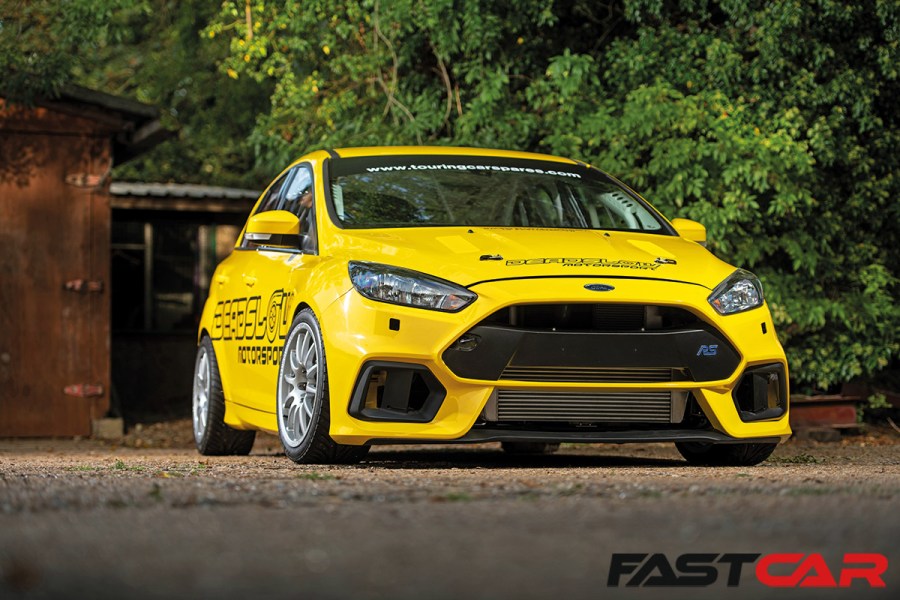“It’s basically a flat-pack Touring Car made by me and my dad in a shed with bits of string.” Hold on tight, as Lewis Denslow’s Mk3 Ford Focus race car adventure is a hell of a ride…
None of this fits,” laughs Lewis Denslow, gazing admiringly at the vivid yellow Mk3 Ford Focus race car that’s eaten up so much of his time over the last five years. “Absolutely everything under the skin has had to be modified, shortened or lengthened to work.”
It’s certainly been a labour of love. And while the idea of a pre-facelift Mk3 Focus 1.6 Titanium with an RS bodykit might not sound like feature material, this car has come a very, very long way from its humble shopper-spec roots.
Indeed, Lewis hasn’t just got a little bit carried away with this – he’s found himself consumed by the intricacies of what evolved into a ridiculously in-depth project, sourcing and customising all of the hardware from genuine Mk2 Focus Touring Cars and stuffing it all into this unsuspecting shell. What he’s achieved here really is mind-boggling.
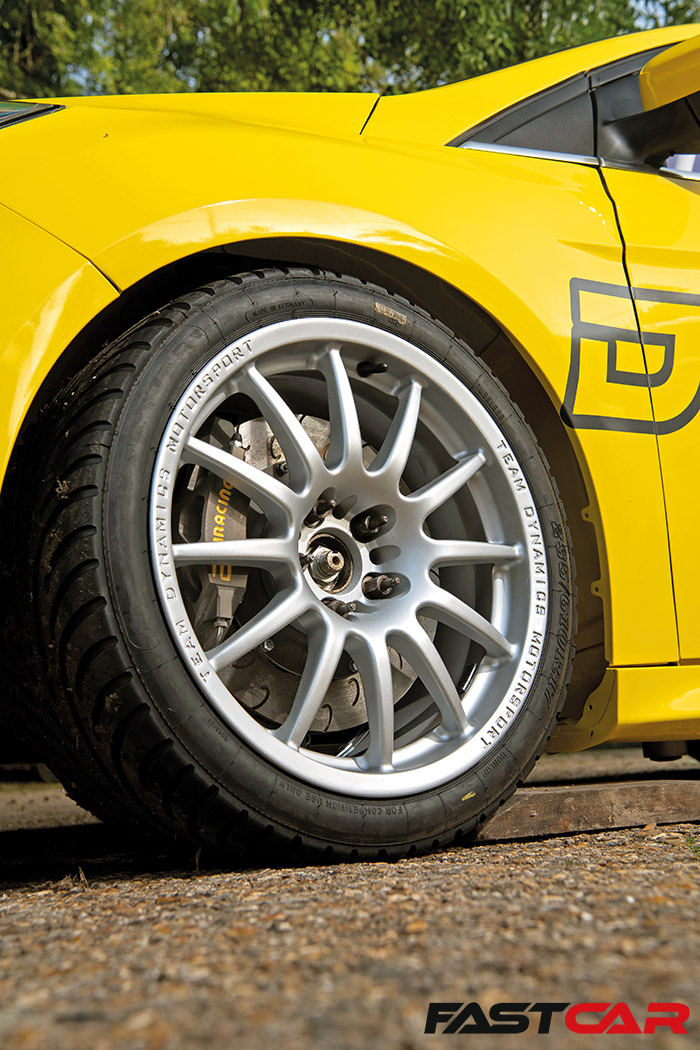
Obsession with Fords
All of this acts as the culmination of a lifetime of obsessing over Fords – and like so many feature car owners, his dad’s automotive proclivities were a clear influence. “My first car was a Mk1 Focus 1.6 that I quickly put on Focus RS wheels,” he recalls. “I was working at Power Engineering at the time and that only grew my passion; when a family friend contacted me regarding some work he needed doing to a 3-door Cosworth, it turned out the engine was a little unhealthy and I ended up buying it. I fully rebuilt the engine and had that for a weekend car – 18 years old in a 320bhp Cossie!
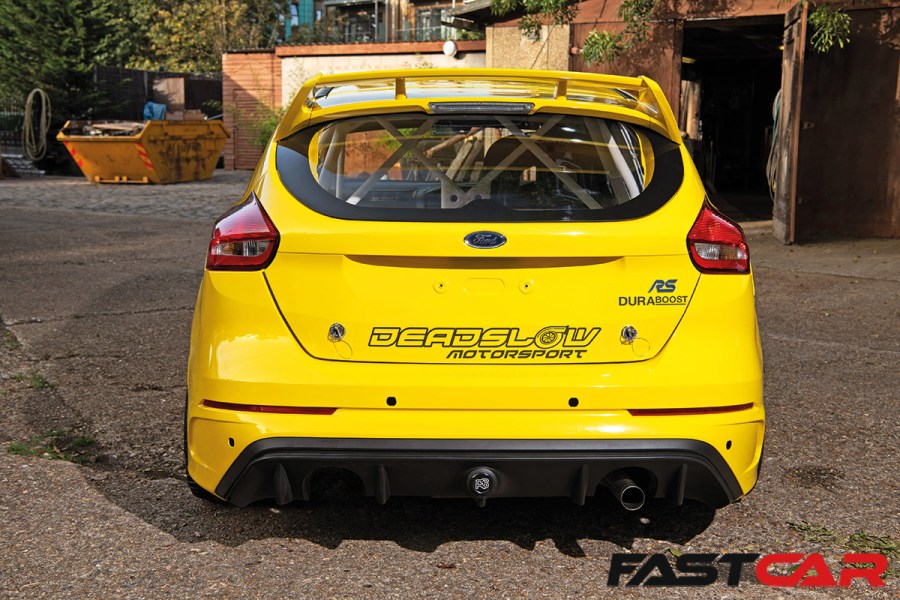
Previous builds
This was just before the prices started skyrocketing. Anyway, that ended up at 420bhp and it’s still in the shed now I’m 34. But when I turned 19, insurance told me to try again with the Sierra when I was 30… so I needed a new boost buzz, and the start of my track obsession came when my best friend Kester Cook decided to sell me his supercharged ST170.”
That car was actually featured in Fast Ford many years back, a 270bhp pocket rocket that proved to be the perfect car with which to get into track days. Unfortunately Lewis put some poor quality fuel in it one day and cracked three pistons, although that setback actually served to spur him on and he rebuilt it with forged internals and all sorts of other goodies, breaking through 300bhp and catching his dad’s eye in the process. “We ended up getting a tarmac rally-prepped Mk2 Escort for him,” Lewis grins. “It had a little crossflow, but after one track day we decided it was way too slow, so we put a 220bhp red-top race engine in it. It sounded awesome on throttle bodies, and we used to go out on track days together.”
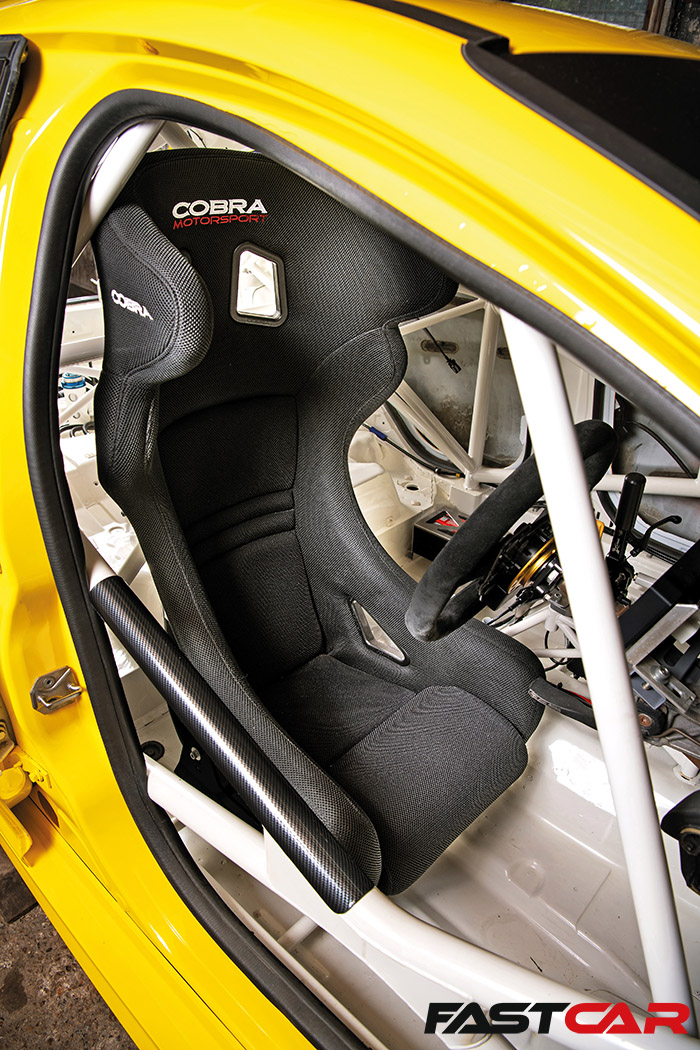
Moving to race cars
By this time, his buddy Kester had got into racing with a German Fiesta cup car, and he kept pestering Lewis to go racing with him. Suffice it to say that Lewis didn’t require all that much persuading, so he tagged along to a few meets in 2015 and started trawling eBay for a suitable project; salvation came in the form of an affordable Mk6 Fiesta cup car up in Scotland, which he sold his daily-driver Sapphire Cosworth to afford.
He travelled up there with his dad to pick it up, ran a couple of track days, and then Kester bought Lewis a race licence kit for his birthday, so he went off to get himself qualified. Impressively, Lewis won the first race he competed in, sharing the drive with Kester in the Trackday Trophy, the lads driving home all sticky after being drenched in Champagne. The sort of cherished memories that you hold dear for a lifetime.
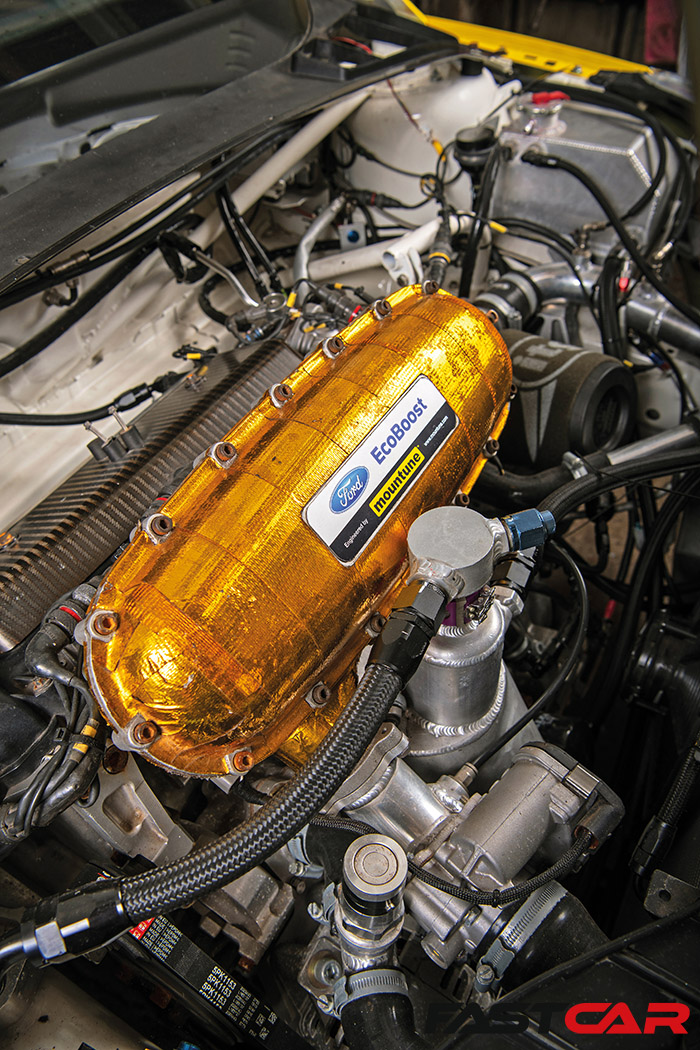
Buying the touring car race engine
All this time, Lewis was getting more and more in-depth. When Kester mooted the idea of selling his race engine, Lewis bit his hand off to get it; by this time he was finding himself engine-swapping and lightening the car, right up to the very limit of what the race series regs allowed, modifying the subframe to lower the roll centre and all sorts… in his first year of racing he came second in the championship, which speaks volumes about both his driving prowess and his mechanical skills. Which sort of explains all the mad stuff that happened next.
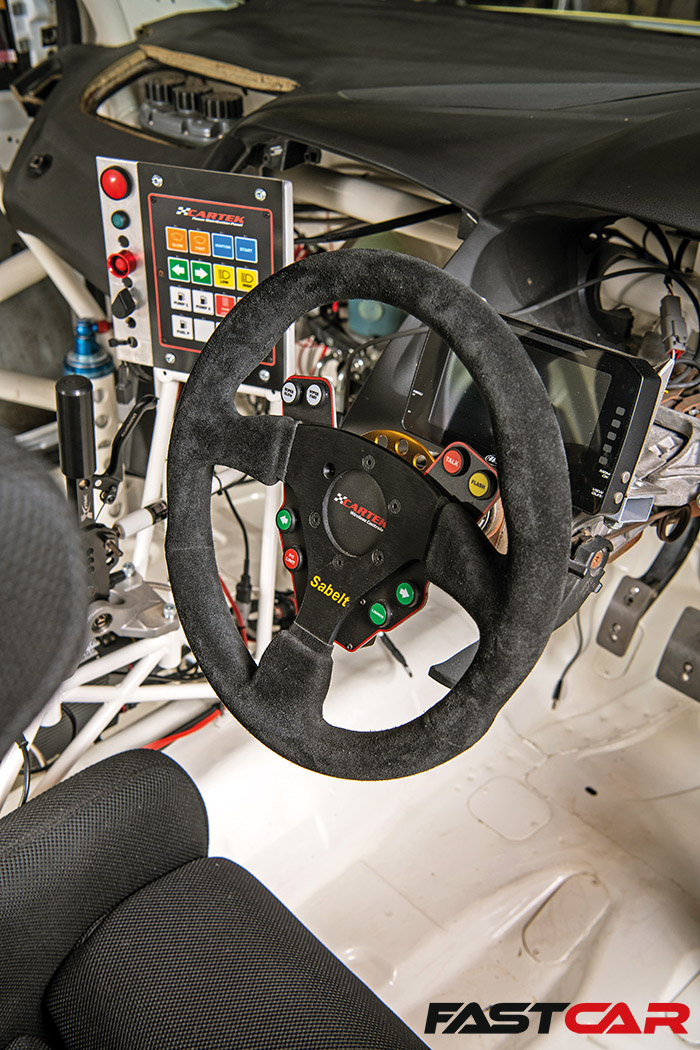
Why use a base Mk3 Ford Focus as a race car?
“Well, I fell in love with the Mk3 when it first came out – I bought a Mountune 275 ST and it was brilliant. Then one day while we were talking about needing more power and torque to get in the higher classes, I told Kester I wanted to build a Mk3… I started off calling scrapyards as I just wanted a shell to begin with, and then one day Kester tags me in a post on FB: Tony from Touring Car Spares was selling a standard complete 2011 Mk3 1.6.
It wasn’t running, smashed but repaired with just some ECU damage – I didn’t care about that as all of that would be going in the bin! So I met with Tony and, as you might gather from the company name, his shed was a treasure trove of goodies, and over the following year or two after buying the car he basically sold me 80% of a Touring Car in flat-pack form!
This was all for a Mk2 Focus Touring Car so it wasn’t ever going to fit anyway, even Tony protested – but again, I didn’t care because my dad’s handy with a welder. My god, what an idiot I was! Nothing was simple, nothing was easy, and when I say the only things on the car that are standard are the front wings and the mirrors, I’m not exaggerating! We even bought a manual mill from eBay as it would save money making bits ourselves. It’s been a nightmare to be honest, but now we’re on the home stretch and people are nothing but nice about it.”
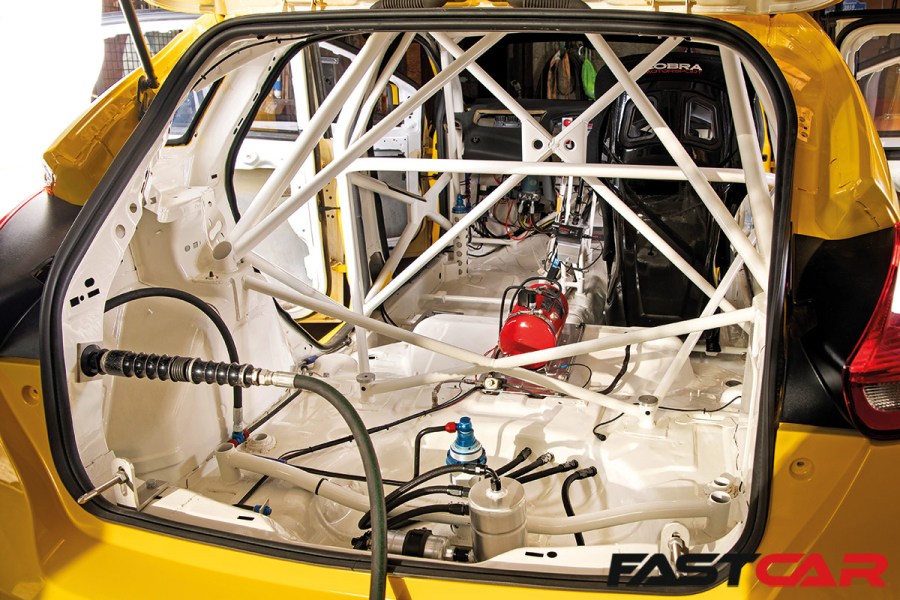
Stripping the car
It’s certainly been an involved process, as you’ll no doubt imagine. It all began with stripping and acid-dipping the shell, which then went off to ARC Autosport to have the rollcage fabricated, subframes fitted and everything stitch-welded. The ’cage has been built as close to actual Touring Car specs as it’s possible to get, with extensive use of detail photos from Tony’s archives. The front and rear subframes attach directly to the rollcage, and ARC’s fabrication skills really are exemplary. And once the shell came back to Lewis, it was time to fit the engine.
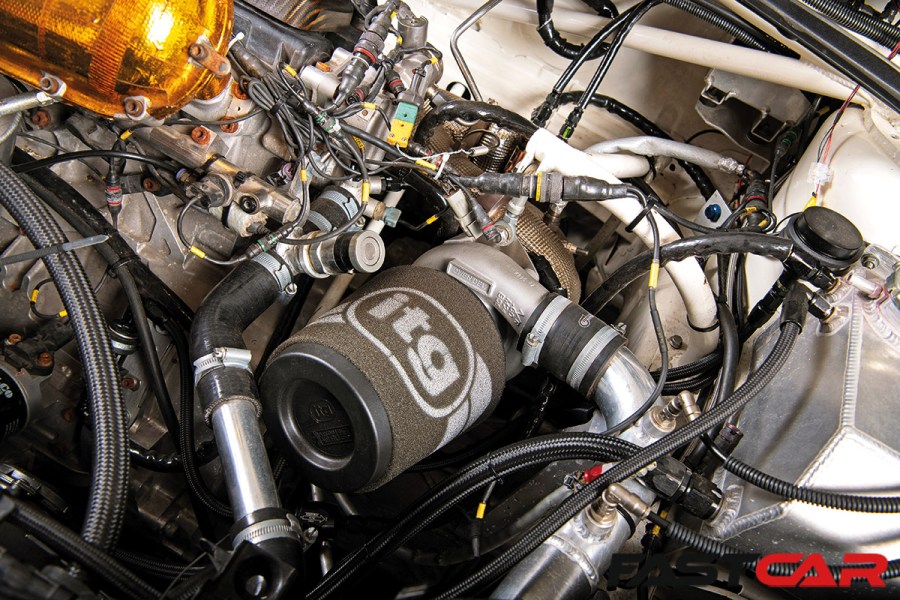
WTCC Mountune race engine
Now, there’s a lot that’s special about this build, but the drivetrain really is something else. “It’s a 2012 ex-WTCC Mountune EcoBoost Global Race Engine,” he explains, “as found in the 2009-2012 era S2000 Arena Touring Cars, which then ended up in the Chinese Touring Car Championship for a bit too. They ran 320bhp with a 33mm turbo restrictor back in the day, with a compression ratio of roughly 12:1. They’re labelled up as EcoBoost, but it’s actually a 1.8 Duratec with a forged crank, rods and pistons, which has been stroked to a 1.6 with a custom direct injection head. We’ve fitted a TOCA turbo from Owen Developments, which in its basic form is a modified GT28; we turned up the boost to 1.45-bar without a restrictor, and on FR102 race fuel it hit 370hp at the hubs, so roughly 400hp at the flywheel.”
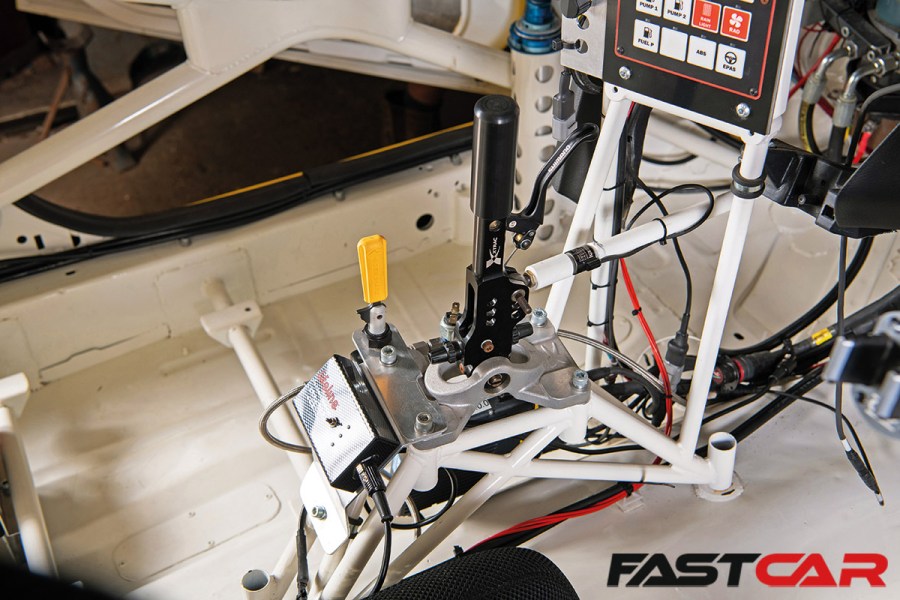
Transmission upgrades for the Ford Focus Mk3 race car
This mighty powerhouse is mated to a pukka Touring Car transmission (it once resided in an Oreca Lada) – an Xtrac 1046 6-speed sequential gearbox. And everything under the skin is genuine race-spec stuff too, the Mk2 Focus Touring Car running gear cunningly shoehorned into the Mk3 shell. The rear subframe is tubular titanium, with T45 tubular wishbones to aluminium hubs; the front subframe is also tubular, with modified Mk2 Focus RS RevoKnuckles, all Rose-jointed and more adjustable than the Hubble Space Telescope. There are no bushes anywhere in the car, everything is solid-mounted to give Lewis the most positive feel from the track to his backside. The only rubber on the car, he says, is the tyres.
“To fit the engine and ’box, we made the mounts and welded them in the chassis legs,” he continues. “We reverse-engineered the rear hub to have the opposite side made, and then it went back to ARC to have the exhaust and coolers made, and breathers and coolant tanks. Back home again, we fitted up the rest of the engine, piping, fuel system and so on, then welded in the front anti-roll bar bearing carriers and made the anti-roll bar arms and shortened them, shortening the wishbones all round. We created a CAD drawing to reproduce the rear ally hub, machined securing brackets for adjustable geo bars, made new adjustable bars, and designed and machined the new driveshaft bearing carrier as at the time we didn’t have an original one.”
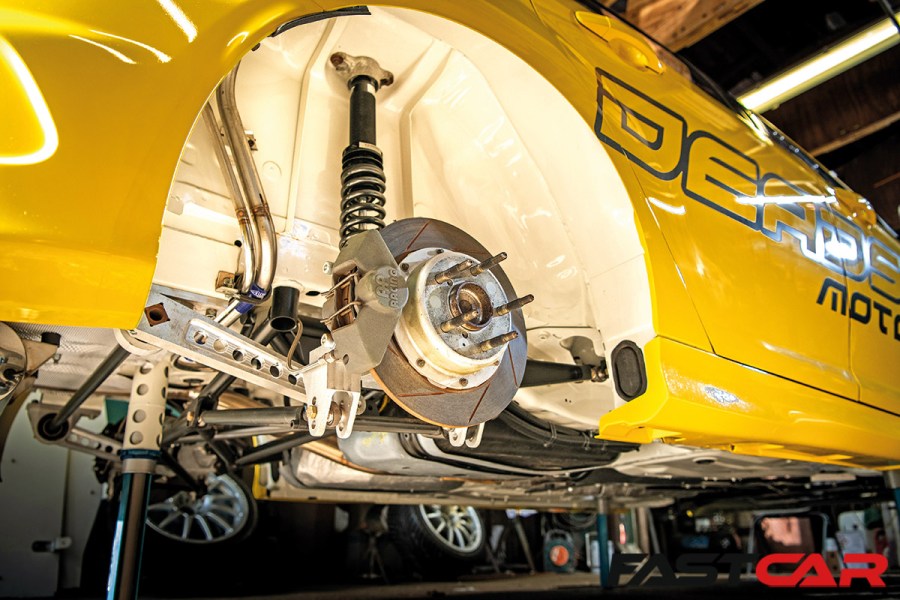
Making it fit
As if it wasn’t a gnarly enough challenge reworking the Mk2 machinery into the Mk3 dimensions, let’s not forget all of the extra hassle that’s required in keeping highly-strung racing componentry happy. Having talked over the specifics of the engine with Mountune, Lewis learned that it could only be started above 60-degrees, so it was necessary to build a diesel pre-heater to warm the coolant before start-up. And that’s just one of the many causes for head-scratching and colourful language.
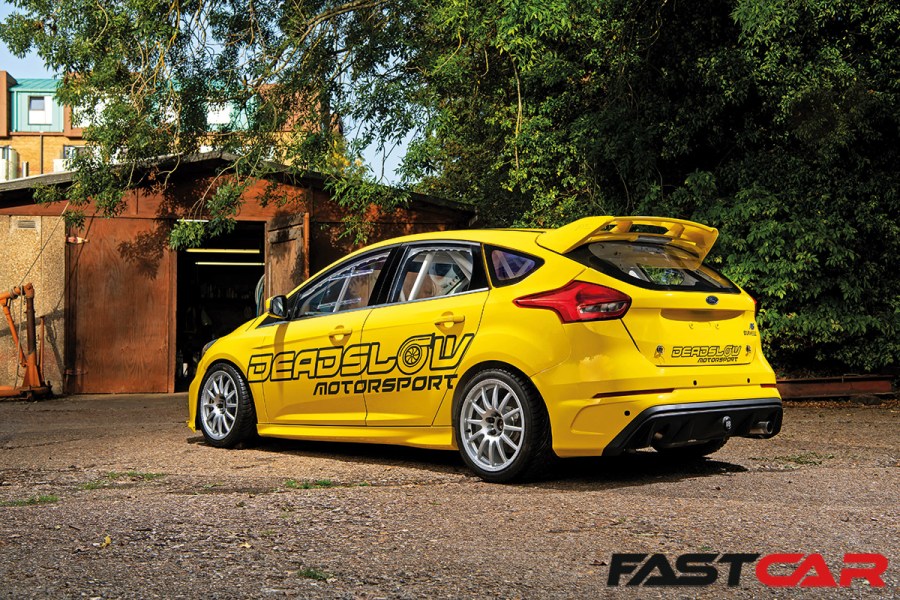
What challenges were there with the Mk3 Ford Focus RS track car?
“What did we have to overcome? Er, basically everything,” Lewis laughs. “Nothing fitted at all, not just because we were putting everything in a different shell to what it was made for, but also because it was made for a wide-track Touring Car and we were sticking with the standard silhouette of the original Mk3 shell. The exhaust didn’t fit through the rear subframe so we fitted a Mk3 RS fuel tank, so the exhaust can travel through the centre where the propshaft would usually be. And there were all the big important items that were missing – rear hub, bump steer arm for the front hub, adjustment arms for the geo, front anti-roll bar arms, driveshaft bearing carrier, and a number of ally and steel brackets for securing suspension components. It’s definitely kept us busy.”
It’s been five years of graft, necessitating endless problem-solving, customising and prototyping, but the finish line is in sight. Following some final testing, you’ll be able to see Lewis and his baby Touring Car racing in the Modified Ford Series through 2024. None of this has been easy, but that’s what makes it all the more satisfying. No-one else has ever done this. And with all of that development work and anticipation, you can be sure that Lewis will be driving it like his hair’s on fire.
Words: Daniel Bevis. Photos: Ade Brannan.

